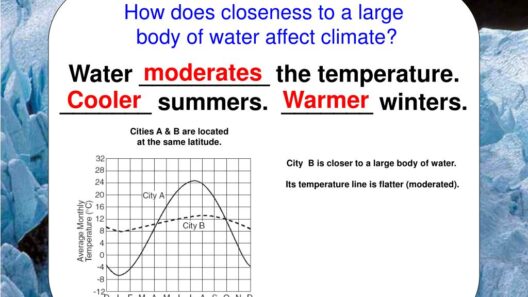
www.floridamuseum.ufl.edu
Rising Tides, Dying Shores: Climate Change and Sea Level Rise
As we sit by the soothing waves on a sunny beach, the rhythmic lapping of water brings comfort and tranquility, but how often do we consider what lies beneath the surface of this serene scene? What if, in a number of years, the shoreline where we bask in the sun were to transform drastically due to rising sea levels? This prospect is not merely the stuff of science fiction; it is a pressing reality that threatens coastlines around the world. How do we reconcile our idyllic beach outings with the profound changes that climate change is unleashing upon our planet’s shorelines?
To understand the roots of rising sea levels, we must first delve into the science of climate change. The Earth’s climate has changed throughout history, but the current rate of change is both alarming and unprecedented, largely due to anthropogenic factors. Human activities, especially the burning of fossil fuels, have accelerated the greenhouse effect, trapping excess heat in the atmosphere. This has led to two major contributors to sea level rise: thermal expansion of seawater and the melting of glaciers and polar ice sheets. As temperatures rise, seas expand and ice melts at an alarming rate, inundating landmasses that have stood for millennia.
With unabated emissions of greenhouse gases, the Intergovernmental Panel on Climate Change (IPCC) warns of potential sea level rises of not just inches, but feet within this century. For coastal cities, this presents a formidable existential challenge. Miami, New Orleans, New York City, and San Francisco, to name a few, are grappling with the prospect of rising waters threatening infrastructure, ecosystems, and livelihoods. The challenge is not just environmental but deeply socio-economic. How do we prepare for these rising tides while safeguarding the communities that could vanish beneath them?
The reality of rising sea levels brings forth irrefutable questions regarding human adaptability and resilience. Eco-systems are intricately linked to the shores they inhabit; when saline water intrudes upon freshwater ecosystems, it leads to the degradation of habitats crucial for a diverse range of species. Mangroves and wetlands act as shields against storm surges and flooding, yet they are among the first casualties when the encroaching sea begins its insidious march inland. Confronted with these challenges, how do we prioritize the preservation of our ecosystems while securing a viable future for human settlement?
Some communities have begun to explore innovative solutions, courageously embracing adaptive strategies to combat the rising waters. “Managed Retreat” involves relocating entire communities and infrastructure from vulnerable shorelines, although such strategies require careful consideration of social equity and economic feasibility. On the other hand, coastal restoration projects aim to rebuild natural barriers. Restoring mangrove forests and wetlands not only protects against flooding but also enhances biodiversity and improves carbon sequestration.
However, questions arise: Who has the right to relocate, and who gets left behind? The social implications of climate migration are staggering. Predictably, the poorest and most marginalized communities often lack the resources to adapt to these changes. Displacement may lead to conflict over dwindling resources and exacerbate existing inequalities. Eco-justice advocates argue that climate resilience cannot be accomplished without addressing the socio-political dimensions of affected populations. If we are to thrive, how do we ensure an equitable approach to adaptation in the face of an uncertain future?
Education and advocacy also play pivotal roles in addressing how society responds to rising sea levels. By disseminating information about climate change and inspiring collective action, communities can mobilize support for sustainable initiatives and policies. Engaging in public dialogue fosters unity and encourages innovative thinking on mitigation and adaptation strategies. Grassroots organizations and local leaders need support in their efforts to craft solutions that reflect their specific needs and contexts. How can widespread awareness be transformed into effective, collective action that not only addresses but also reduces the risk of rising tides?
Equally essential is international cooperation. Sea level rise is a global challenge that transcends borders. Developing countries that contribute the least to carbon emissions are often the hardest hit. Established nations must take accountability for their environmental footprint and support vulnerable regions through technology transfer and financial aid. Global agreements such as the Paris Accord emphasize the importance of collaborative efforts to combat climate change. But is mere acknowledgment enough, or does it require more urgent, robust action heading into the future?
The effects of climate change and rising sea levels are woven into the fabric of numerous societal challenges. From economic ramifications and biodiversity loss to cultural heritage destruction and human displacement, it is imperative to foster a comprehensive understanding of how rising tides impact every facet of human life. Recognizing the intricate connections between climate policy and social equity can lead to more resilient communities that are prepared to meet the looming challenges ahead.
In conclusion, as the waters rise, the call to action becomes increasingly urgent. Every considerable effort counts, whether through advocacy, education, or innovative adaptations. While some may view rising tides as a harbinger of doom, others see a clarion call for revitalization and resilience. So, as those waves lap at the shores, we must ask ourselves: Are we prepared for the tide of change, or will we be swept away in its currents? How we respond today will shape the destiny of countless shores and communities around the world.




